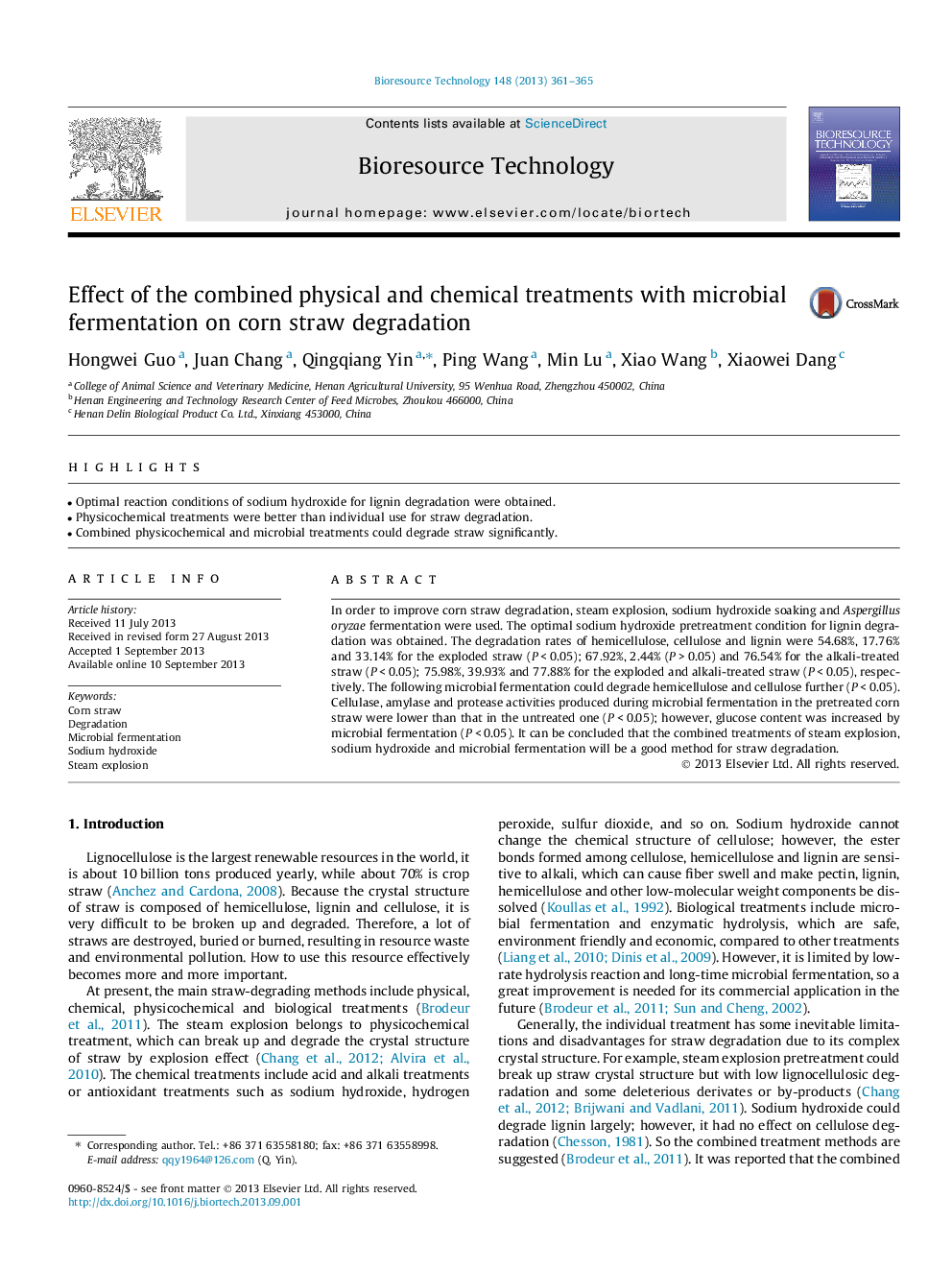| Article ID | Journal | Published Year | Pages | File Type |
|---|---|---|---|---|
| 7080251 | Bioresource Technology | 2013 | 5 Pages |
Abstract
In order to improve corn straw degradation, steam explosion, sodium hydroxide soaking and Aspergillus oryzae fermentation were used. The optimal sodium hydroxide pretreatment condition for lignin degradation was obtained. The degradation rates of hemicellulose, cellulose and lignin were 54.68%, 17.76% and 33.14% for the exploded straw (PÂ <Â 0.05); 67.92%, 2.44% (PÂ >Â 0.05) and 76.54% for the alkali-treated straw (PÂ <Â 0.05); 75.98%, 39.93% and 77.88% for the exploded and alkali-treated straw (PÂ <Â 0.05), respectively. The following microbial fermentation could degrade hemicellulose and cellulose further (PÂ <Â 0.05). Cellulase, amylase and protease activities produced during microbial fermentation in the pretreated corn straw were lower than that in the untreated one (PÂ <Â 0.05); however, glucose content was increased by microbial fermentation (PÂ <Â 0.05). It can be concluded that the combined treatments of steam explosion, sodium hydroxide and microbial fermentation will be a good method for straw degradation.
Related Topics
Physical Sciences and Engineering
Chemical Engineering
Process Chemistry and Technology
Authors
Hongwei Guo, Juan Chang, Qingqiang Yin, Ping Wang, Min Lu, Xiao Wang, Xiaowei Dang,
